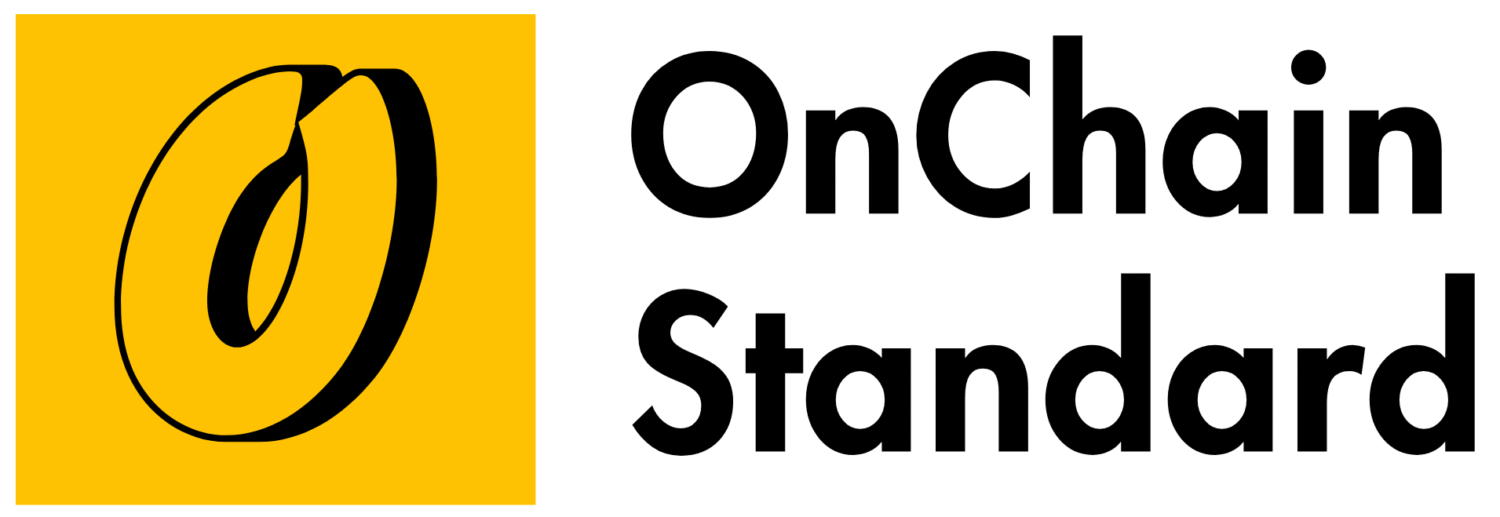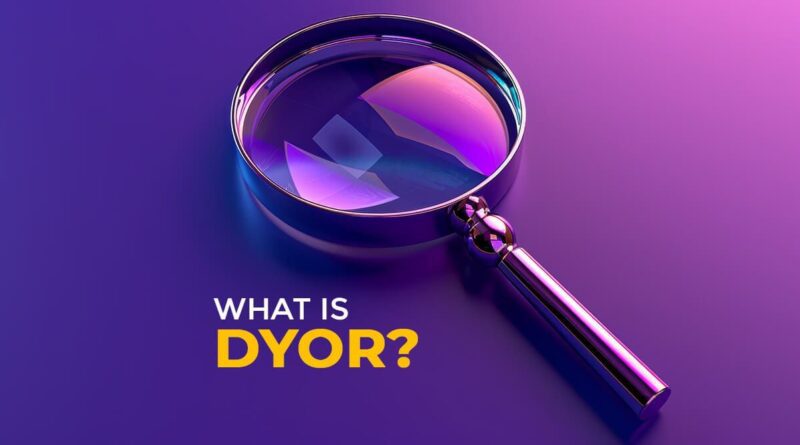How to Do Your Own Research (DYOR) Before Investing in Crypto Projects: A Simple Guide for Beginners
Introduction
DYOR, or “Do Your Own Research,” is a cornerstone of smart crypto investing. With thousands of cryptocurrencies and blockchain projects flooding the market in 2025, promising high returns, thorough research helps you separate legitimate opportunities from scams. This guide offers practical, beginner-friendly steps and trusted tools to research crypto projects effectively, ensuring you make informed decisions. Learn how to buy crypto legally.
Why DYOR Matters
Crypto is a high-reward, high-risk space. Bitcoin, for instance, saw a 20% price drop in early 2025, and scams like rugpulls drained billions from investors in 2024 see what is a rugpull in crypto. DYOR empowers you to spot trustworthy projects, avoid overhyped coins, understand risks, and build confidence. With the crypto market exceeding $2 trillion in 2025, researching projects like Ethereum or emerging platforms is critical to navigate hype and find value.
Step-by-Step Guide to DYOR
Here’s a clear, actionable guide to researching crypto projects, using reliable tools to keep things simple. Bullets are used only for the “Understand the Project’s Purpose” and “Research the Team” sections for brevity.
- Understand the Project’s Purpose
Start by exploring what the project does and why it exists. Is it a payment coin, a DeFi platform, a gaming ecosystem, or an NFT marketplace? Visit the project’s official website and read its whitepaper—a document outlining its goals and tech. A vague website or missing whitepaper signals potential scams. For example, Uniswap’s whitepaper details its automated market maker (AMM) system for decentralized trading see what is an AMM.
- What to Ask: What problem does the project solve? Is it unique compared to competitors? Does it have a working product, like an app or demo?
- Tools: Visit the project’s website (e.g., uniswap.org). Find whitepapers on CoinMarketCap by searching “project name + whitepaper.” Use CoinGecko for project summaries and verified links.
- Research the Team
Investigate the team behind the project. A credible team with named members and experience in crypto, tech, or finance inspires trust. Anonymous teams or missing team info are red flags. For instance, Ethereum’s team, led by Vitalik Buterin, has a proven track record in blockchain innovation.
- What to Ask: Are the founders named or anonymous? Do they have relevant experience? Have they delivered successful projects before?
- Tools: Search team members on LinkedIn (e.g., “Vitalik Buterin LinkedIn”). Check the project’s “About” or “Team” page. Search X for posts about founders (e.g., “Ethereum team”), but verify claims. Use Crunchbase for funding or company details.
“Never buy a coin because ‘someone said so’. DYOR.” – @cz_binance
- Check the Token’s Economics (Tokenomics)
Understand the token’s economics, or “tokenomics.” Examine the total and circulating supply, who holds most tokens, the token’s purpose (e.g., paying fees, staking, governance), and whether there’s inflation or burning to manage supply. Unclear tokenomics or heavy team ownership can be risky. For example, a project with 80% of tokens in one wallet raises concerns. Use CoinMarketCap or CoinGecko for supply and price data, Etherscan to check wallet holdings (search “project name contract address”), and the whitepaper for token details.
- Evaluate the Technology
Assess the blockchain or technology powering the project. Is it fast, secure, and scalable? Does it have a working product or just promises? Confirm which blockchain it uses (e.g., Ethereum, Solana) and if it’s audited for security. Lack of code activity or audits is a warning sign. Check the project’s GitHub for code updates, look for audit reports by Certik, and use block explorers like Etherscan to verify live transactions.
- Analyze Community and Hype
A genuine, active community can drive a project’s success, but fake hype often hides scams. Check if the community is real or bot-driven, if official social channels post regular updates, and whether hype is tech-driven or profit-focused. Projects with only paid X posts may be risky. Search “project name” on X for user sentiment, but cross-check claims. Join official Discord or Telegram channels, and explore Reddit communities like r/cryptocurrency for honest feedback.
- Check Market Performance
Analyze the token’s price history, trading volume, and market cap to assess stability and demand. Ask if the price is stable or highly volatile, if trading volume is high (indicating trust), and if the market cap aligns with the project’s stage. Low volume or an inflated market cap can signal issues. Track data on CoinMarketCap, analyze trends on TradingView, and check liquidity on DEX Screener.
- Look for Partnerships and Adoption
Real-world use and partnerships with reputable companies or blockchains indicate a project’s potential. Are there active users or apps? Are there listings on trusted exchanges like Binance? Check partnership announcements on the project’s website or blog, verify active users on DappRadar, and confirm exchange listings on CoinGecko.
- Assess Risks and Red Flags
Watch for red flags like anonymous teams, “guaranteed” profit claims, heavy token concentration, or no audits. Fake social media hype or paid influencers also raise concerns. A project with no working product or excessive team token ownership could be a rugpull see what is a rugpull in crypto. Use Rugcheck.xyz to analyze token ownership, verify audits on Certik, and search X for scam warnings (e.g., “project name scam”).
- Test the Project Yourself
Try the project’s app, game, or testnet to see if it delivers as promised. Is it user-friendly and functional? Are there real users or transactions? A broken app or no demo is a red flag. Download apps from official sites, check transactions on Etherscan, and join testnets via Discord or the project’s website.
- Plan Your Investment
After researching, decide how much to invest and manage risks. Start small (e.g., $10–$50), use a secure wallet like Ledger see types of crypto wallets, check tax rules see how crypto taxes work, and diversify. Buy tokens on trusted platforms like Binance or Uniswap, and track your portfolio with apps like CoinStats.
Tips for Safe DYOR
Cross-check information using CoinMarketCap, Etherscan, and GitHub. Don’t trust a single source or X post. Ignore “to the moon” hype and focus on tech and utility. Secure funds with a non-custodial wallet like MetaMask and enable 2FA see types of crypto wallets. Never share your seed phrase. Stay updated with CoinDesk or CoinTelegraph. Join Discord or Reddit communities. Keep records for taxes, as crypto profits may be taxable see how crypto taxes work.
“Do Your Own Research” has become the battle cry of the Dunning-Kruger army. Most don’t have the critical thinking or research skills to “DYOR”. Most just use this phrase to stop smarter people from making them feel dumb by revealing their ignorance. – @aantonop View Tweet.
The Future of DYOR in 2025
In 2025, DYOR remains essential as new tokens flood the $2 trillion crypto market. Tools like Rugcheck and DappRadar simplify research, while stricter regulations may force projects to be more transparent. Active communities on Discord and X drive success, but scams persist, making thorough research your best defense.
Conclusion
DYOR is your key to navigating the crypto market safely in 2025. By researching a project’s purpose, team, tech, tokenomics, and community with tools like CoinMarketCap, Etherscan, and GitHub, you can make confident investment choices. Start small, use secure wallets, and cross-check everything to avoid scams like rugpulls. With careful research, you can explore promising projects like Ethereum or Uniswap while protecting your funds.




